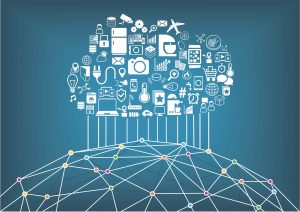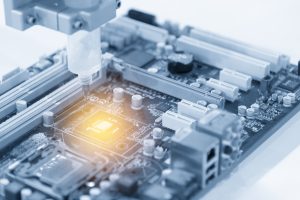Are you one of those managers that need to do something about your organization’s sustainability and think that you don’t have the resources for technical projects, since you need to focus on your sustainability image?
You are not alone.
However, the interesting question is if there is a conflict in choosing between them? Sometimes it is, sometimes it’s not. If we focus on Internet of Things (IoT) we have a firm idea that it is not a contradiction. It is often the best thing you can do with your limited resources.
IoT has rapidly emerged as a transformative technology, revolutionizing the way we live and work. It involves connecting everyday devices to the internet, allowing them to communicate with each other and automatically perform tasks. While IoT has brought tremendous benefits to society, such as increased efficiency and convenience, there are concerns about its impact on the environment and sustainability. In this article, we will explore the question: Is IoT good for the climate?
First, we should filter out all seemingly bad ideas, that is considered not worth spending time on.
Continuing the argumentation – the positive impact of IoT on the climate extends beyond its own footprint. According to a report by the Global e-Sustainability Initiative, Information and Communication Technology (ICT), IoT has almost ten times more positive effects on the climate compared to its footprint. This is because ICT can enable the digital transformation of other industries, such as energy, transportation, and agriculture, leading to significant reductions in carbon emissions.
Now occurs a more central question – the financial aspect. If we can’t make IoT projects profitable, we have no chance.
Harald Mix, a finance entrepreneur that invest in “clean” innovation witness about that they can provide “CO2-free” batteries and steel. He claims that it will be possible to do that even cheaper than traditional production, based on brown coal. He further claims that it is not a contradiction between sustainability and profitability. It is rather the other way around. The example is however not an IoT case but shows that there is no conflict between efficiency and sustainability. It is argued that it is the other way around.
Harald Mix et.al. want to use established technologies to disrupt house heating in Europe – simply by a new business model. The model is relying on a connected system. In many countries in Europe, he claims that 1/5 of energy consumption is from housewarming. That is twice as much as from cars – so it will make a difference. Will they be successful? Their calculation gives that they will be able to half the cost for the customers and that is a promising start.
That’s the landmark way of doing it – connect things and offer a service. Trying to make it easy for the users and try to overcome the obstacles that the change may result in. The payback will be enormous to the one that will successfully do this. Think about many of our unicorn’s process, e.g. Spotify, which are very similar in changing the way we do business.
Even if you won’t be able to become the game changer, you will contribute and perhaps avoid being left behind with bankruptcy as the worst case.
Another example of a game changer is Tibber, since electric meters nowadays are normally connected.
But what is it really that Tibber is doing? Shortly – they are buying and selling electricity. The end customer pays to Tibber a small monthly fee plus a very small fee per kWh. The business value comes from the knowledge of how and when the price is changing and may also predict variations. To make this easy they have automated solutions. The price difference for electricity over 24 hours can be extremely high. At several occasions it may be 100 times higher at the peak, compared to the bottom. Most people understand that this is attractive to households with electric cars and smart homes.
When electric meters got connected a few years after the millennium shift, not much happened. But eventually the product matured and Tibber (founded in 2015) identified a solid business model, and they outperformed the incumbents, who early talked about the ideas around using spot prices to improve business, but they failed due to being stuck in old processes. The connected solution from Tibber gave the opportunity to change the business and give a more sustainable solution, it just took a while!
But is Tibber’s solution sustainable? Of course, we claim. Since electric production is very focused on peak capacity, the changed consumer behaviour can be the margin that will make the usage of “dirty” electricity superfluous. It allows for less need of planning for extra capacity in peaks and other secondary effects, like making electric cars easy and priceworthy to own and charge. Smart homes will further give Tibber’s system a contribution to sustainability.
Are electric scooters, the one that you can easily pick up in the street, good for our planet? We think that it is a model for any sharing in the future, and that it will become a sustainable solution and, in the end, good for our planet. It will just take a while.





